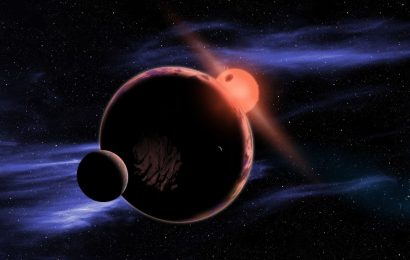New Research from Brown University suggests that there could be water deep inside the moon
Scientists analyzed satellite images and found proof of water being trapped in “glass beads” in ancient ash and rocks that volcanoes cast on the surface of the moon, said Ralph Milliken, associate professor in Brown’s Department of Earth, Environmental and Planetary Sciences.
“The fact that nearly all of them (the volcanic deposits) exhibit signatures of water suggests … that the bulk interior of the moon is wet,” he said
The discovery is very important for future moon missions because water could be extracted from the volcanic deposits.
Even though the glass beads don’t contain a lot of water, only a few hundred parts per million, it is still a tremendous deal of the volcanic material to work with.
“It’s more water than previously recognized,” he said.
Back in 2009, NASA announced that it had found water on the Moon. One ton of the moon’s surface is assumed to yield 32 ounces, as scientists said.
At the same time, they speculated that those crystals might have been created by solar winds that interacted with hydrogen at really high altitudes, Milliken said. In addition to this, there are also small amounts of frozen water present at the Moon’s poles.
Back in 1960s, when Apollo missions just started, the Moon was believed to be completely dry. However, that particular thinking changed in 2008, when volcanic glass beads were brought back by the Apollo 15 and 17 missions of 1971 and 1972. These beads were found to contain tiny crystalline formations that contained water.
However, nobody knew for sure if those Apollo samples represented the entire moon or simply unusual spots on a dry surface.
When scientists took a better look at satellite images, they discovered materials that were never examined by the Apollo missions. After doing a “thermal correction”, they collected data that showed clear evidence of the glass beads in nearly all the volcanic deposits spread across the moon, Brown said.
“The distribution of these water-rich deposits is the key thing,” Milliken said in the news release. “They’re spread across the surface, which tells us that the water found in the Apollo samples isn’t a one-off.”
Now, scientists are taking into consideration the possibility of doing another mission on the Moon with the aim of using it as a stepping stone for going to Mars.
“If we want to send people to Mars, you might consider using the moon as a stepping stone for training or testing equipment,” he said. “If you do that you’ll need water. It’s heavy and expensive to lift off earth.”



